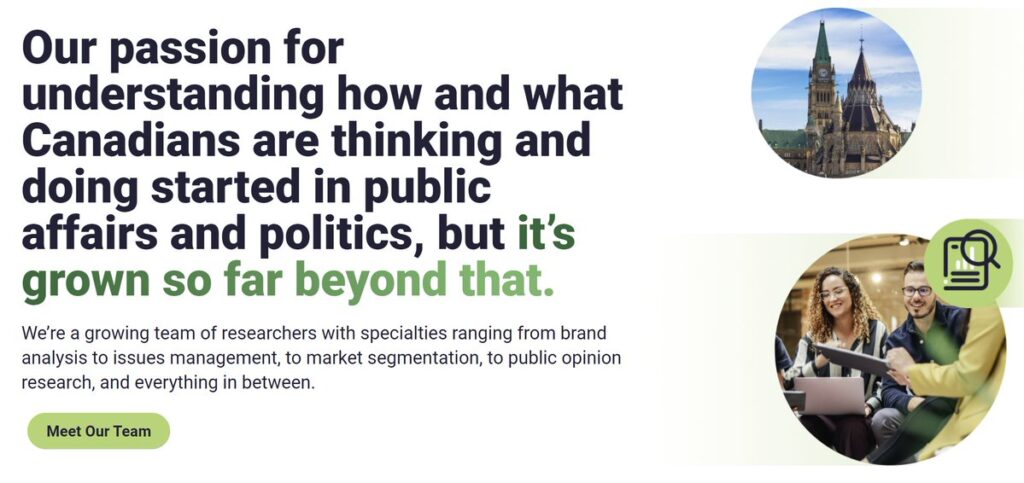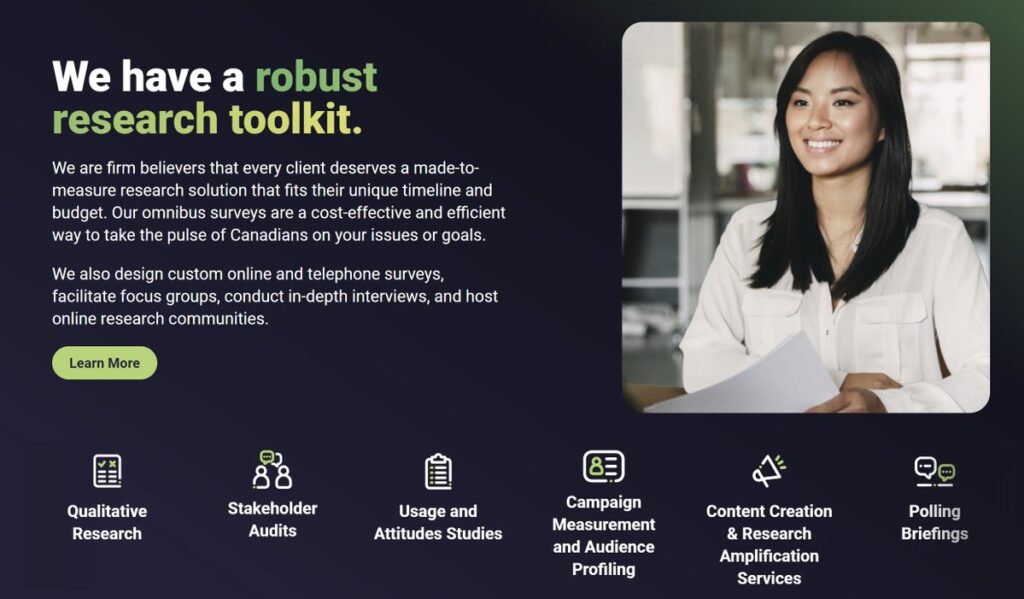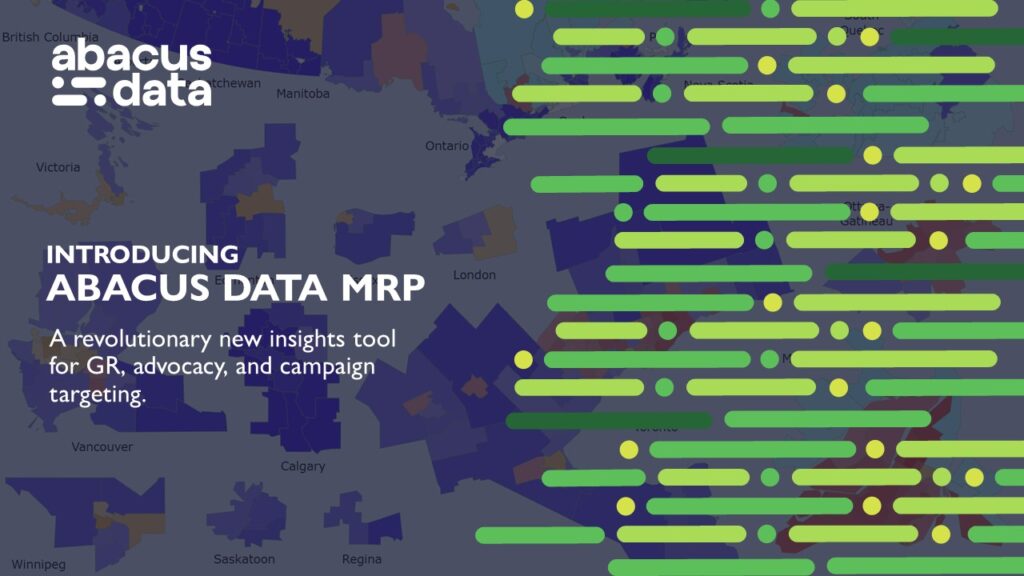Abacus Data Poll: Nova Scotians are Thinking Big, Dreaming of Being an Energy and Resource Superpower
At Abacus Data, we always go deep. One of the ways we make sure we collect the data and insights our clients need is by putting lots of questions in field, but sometimes single questions reveal big insights all by themselves.
At the end of May, we asked 800 adults living in Nova Scotia a forward-looking question in our Nova Scotia omnibus survey: If you could choose a future outcome for the province by 2040 from this list, what would it be?
We asked this question, because we wanted to better understand the future that Nova Scotians see for themselves, and the scale of those ambitions.
The results we are sharing here also reveal something else. They provide a little window into the work Premier Tim Houston and his PC government has been doing to advance Nova Scotia’s interests and who currently shares (and doesn’t share) their big aspirations.
Take a look…
What’s the big dream for Nova Scotia and Nova Scotians? It’s becoming an energy and resource superpower by 2040.
Start your engines! A remarkable thirty-five percent of Nova Scotians picked being an energy and resource superpower from the list of future outcomes we provided, far outpacing the second most-popular dream of transforming the Cabot Trail into a world-famous cycling and hiking destination (23%). Other future outcomes like becoming a booming tech hub (13%), finding the long-fabled Oak Island treasure (13%), becoming another “Hollywood North” (9%), and experiencing major population growth and density (7%) are less popular future outcomes.

The Energy-and-Resource-Superpower-Dream is Widespread
Becoming an energy and resources superpower is the top choice at the big provincial level as well as in most demographic segments (i.e. when we break the responses to the question down by age, gender, and region as well as provincial vote intentions).
- Interest in Nova Scotia becoming an energy and resource superpower by 2040 is almost as strong among men (34%) as it is among women (36%).
- It’s also the top choice for members of every income group (falling between 30% and 37% regardless of household income) and it finishes first or second in every region of the province, with becoming an energy and resource superpower being the top choice among Halifax residents (38%) and mainland Nova Scotians (34%) and a large proportion of Cape Breton residents (30%) also consider it the most desirable option.
- The energy and natural resources dream is also popular among people of different political persuasions. 41% of current Progressive Conservative supporters and 36% of Liberal supporters choose it from the list of options provided, as do 31% of NDP voters.
This kind of alignment is rare in today’s public opinion environment, making these results really stand out.
“Wait… Didn’t I hear Tim Houston say something about that recently?!”
As regular consumers of Nova Scotia news and politics will know… The top choice in our poll of becoming an energy and resource superpower perfectly matches the stated ambitions of Nova Scotia Premier Tim Houston and his PC government.
In recent months, Premier Houston and his Ministers have been very vocal about the (big) role they want energy and natural resources to play in building Nova Scotia’s economic future – from embracing offshore wind and green hydrogen development to growing critical minerals and sustainable forestry.
In January, Premier Houston wrote an open letter to Nova Scotians (which appeared on the front page of the Halifax Chronicle Herald and other Saltwire publications), making the case of more resource development to strength the province’s economy and protect itself against the many threats of US President Donald Trump.
Last Monday, the Houston government also released a new video advertising Nova Scotia’s energy ambitions after Premier Houston and all of the provincial Premiers and Territorial Leaders met with Prime Minister Carney in Saskatoon. (If you haven’t seen the video yet… In the opening seconds, an extremely enthusiastic looking Premier Houston asks: “What if Nova Scotia could power up to 27% of Canada’s electricity needs?… Stop and think about that. That would make Nova Scotia an energy superpower! Sounds like a stretch, right? Well, it’s not.” Then he proceeds to make the case for the “Wind West” offshore wind energy project.
If 35% of Nova Scotians identified nearly the same goal (i.e. making “Nova Scotia an energy and resource superpower”) as their top 2040 outcome in our recent surveying (end of May 2025), then that means that Premier Houston and his Ministers are well on their way to convincing Nova Scotians that being an energy and natural resource superpower is the big goal that everybody should be working towards. That’s really good news for the Premier and his government as they continue to advance their post-election agenda, giving them the political capital to keep pushing forward.
But not everyone agrees. Some Nova Scotians are dreaming of other things.
Going back to the research… The second-most popular response to our future-outcome question was transforming the Cabot Trail into a globally renowned cycling and hiking destination (23% overall), and that ambition is stronger in some demographic segments than others. It is the top pick for 39% of Cape Bretoners and it has stronger appeal among women (26%) than men (20%). It also performs the best among NDP supporters (27%), suggesting that this more tourism- and nature-oriented vision resonates particularly with progressive and regionally grounded segments of the population.
Younger and lower-income Nova Scotians lean slightly more toward tech and tourism-oriented outcomes. A “booming tech hub” drew modest support across all subgroups (13% overall), with some additional lift from younger and more urban respondents, particularly in Halifax.
Meanwhile, more novelty-oriented or entertainment-driven options like “Another Hollywood North” and “Finding the Oak Island treasure” were more niche in their appeal, with around 10% of respondents choosing those options.
Notably, “Major population growth and density” was the least preferred option overall (7%), and it failed to resonate strongly with any subgroup. While population growth is often cited as a key pillar of economic development, the idea of significantly increasing density appears less aspirational for Nova Scotians, even in urban Halifax.
Conclusion
At a time when many provinces are grappling with uncertainty and anxiety about the future, Nova Scotians are mostly on the same page and dreaming big. The desire to become an energy and resource superpower is not just about economics. It reflects a broader hunger for security and prosperity in a world that’s changing fast. It also suggests that narratives about “natural advantages,” energy sovereignty, and economic independence – like the ones the Houston government is making — are resonating in a deep way. That’s a valuable insight for all organizations of all types that trying to cut through the noise of 2025 and connect with the public. At the same time, the interest in eco-tourism, tech, and creative industries – while not dominant – remain important to Nova Scotians, living large in their dreams.

Methodology
The survey was conducted with 800 adult Nova Scotians over the age of 18 from May 23 to 29, 2025. A random sample of panelists were invited to complete the survey from a set of partner panels based on the Lucid exchange platform. These partners are typically double opt-in survey panels, blended to manage out potential skews in the data from a single source.
The margin of error for a comparable probability-based random sample of the same size is +/- 3.46%, 19 times out of 20.
The data were weighted according to census data to ensure that the sample matched Canada’s population according to age, gender, educational attainment, and region. Totals may not add up to 100 due to rounding.
The survey was paid for by Abacus Data.
Abacus Data follows the CRIC Public Opinion Research Standards and Disclosure Requirements that can be found here: https://canadianresearchinsightscouncil.ca/standards/
ABOUT ABACUS DATA
We are Canada’s most sought-after, influential, and impactful polling and market research firm. We are hired by many of North America’s most respected and influential brands and organizations.
We use the latest technology, sound science, and deep experience to generate top-flight research-based advice to our clients. We offer global research capacity with a strong focus on customer service, attention to detail, and exceptional value.
And we are growing throughout all parts of Canada and the United States and have capacity for new clients who want high quality research insights with enlightened hospitality.
Our record speaks for itself: we were one of the most accurate pollsters conducting research during the 2025 Canadian election following up on our outstanding record in the 2021, 2019, 2015, and 2011 federal elections.
Contact us with any questions.
Find out more about how we can help your organization by downloading our corporate profile and service offering.














































































